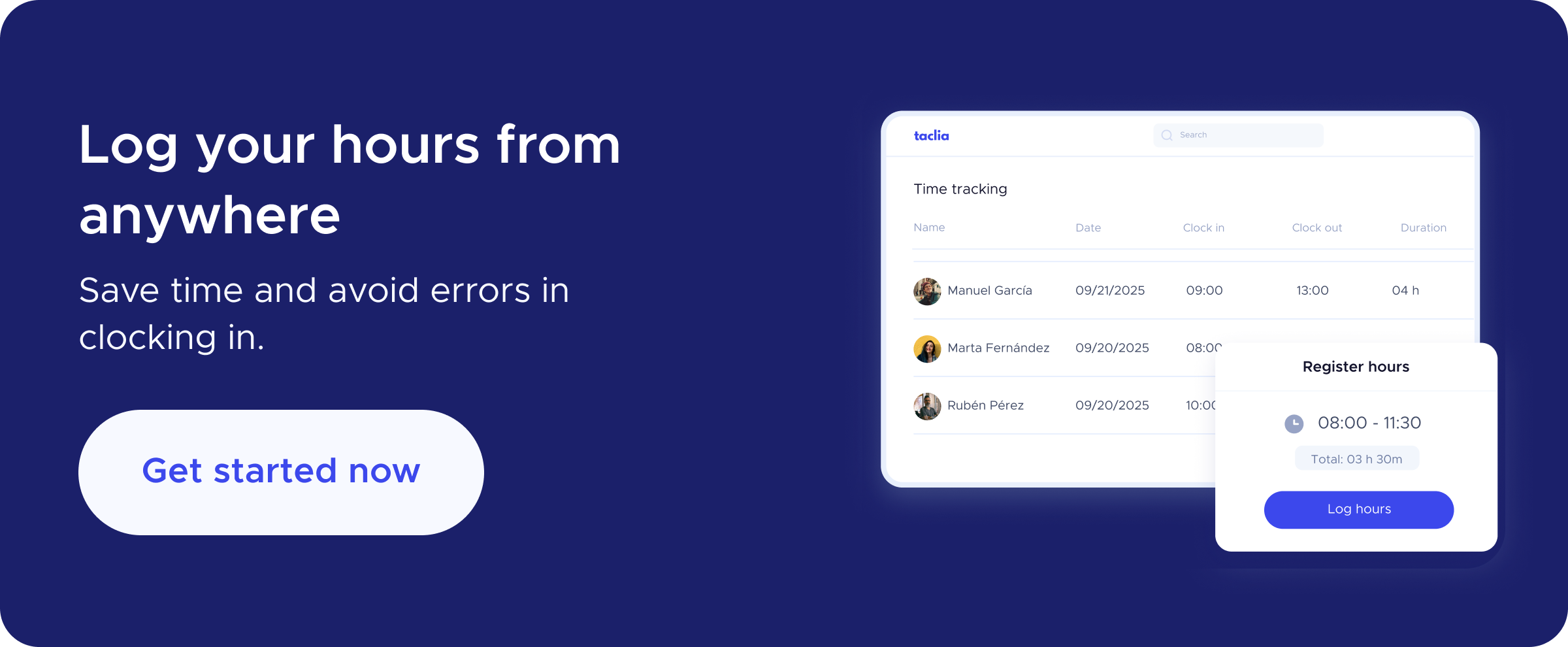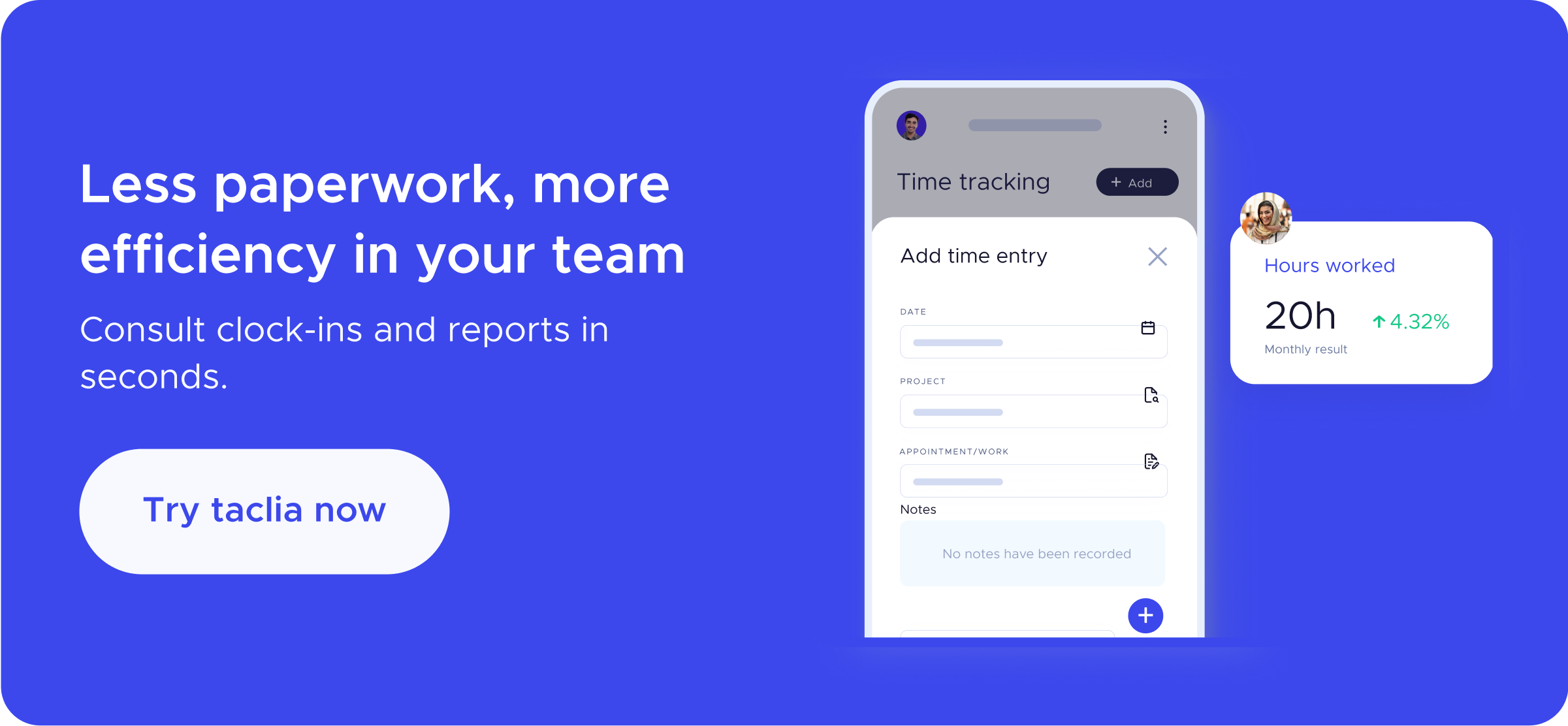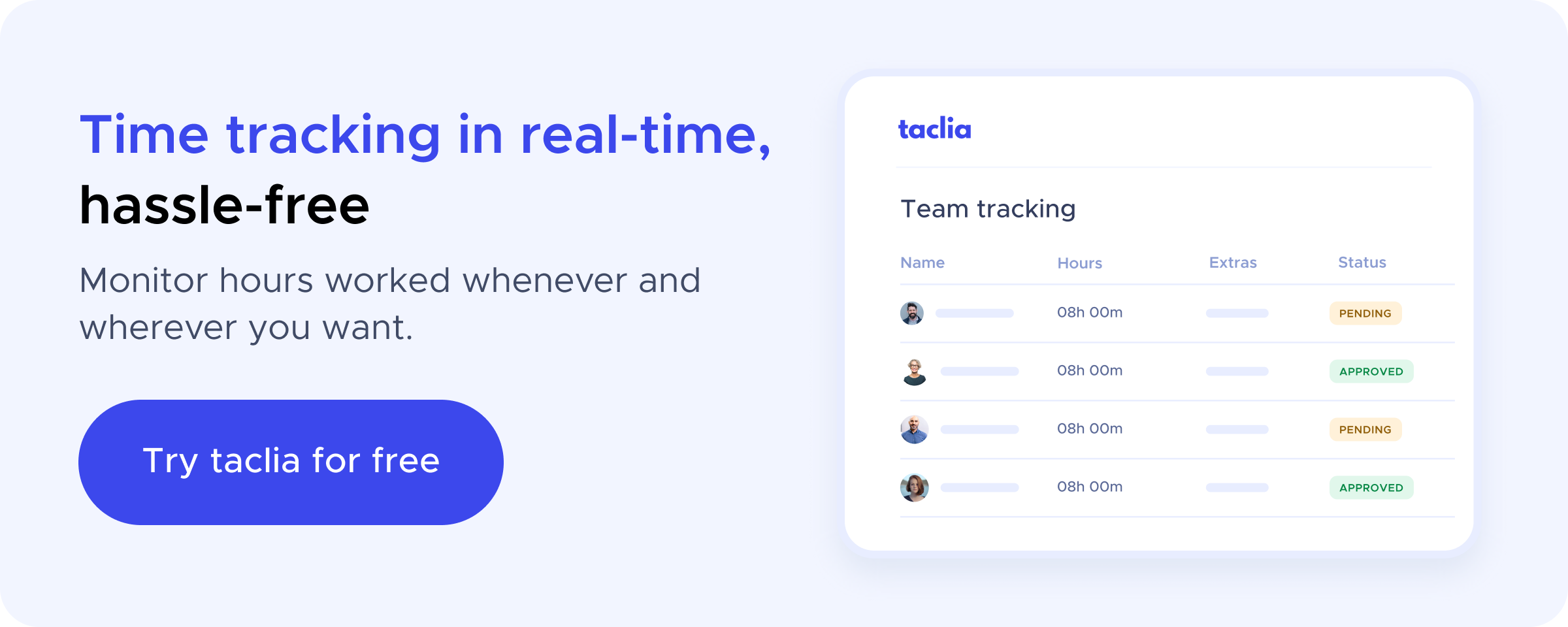How to reduce Work Absenteeism? Tips, measures and solutions


What is absenteeism from work and how does it affect companies?
El absenteeism from work refers to the absence of an employee during their working day, whether for justified reasons or not.
This includes everything from unexpected faults to the call face-to-face absenteeism, when the worker is in his position but does not perform the assigned tasks.
According to a Adecco report, in 2020 the absenteeism rate in Spain reached 7.1%, which meant the loss of 1.7 billion working hours.
Impact of work absenteeism:
- Economic Losses: Because of the need to cover absences with overtime or temporary contracts.
- Reduced productivity: By increasing the workload of other employees.
- Deterioration of the working environment: Teams can become demotivated by taking on additional tasks.
Understanding the causes and types of absenteeism is essential for implementing effective measures and protect business productivity.
Main causes of work absenteeism
Absenteeism from work is not always related to the employee's personal life; often, problems within the company contribute to this situation.
The most common causes include:
- Lack of oversight: The absence of time tracking systems makes it easier for faults not to be detected in time.
- Job dissatisfaction: Unmotivated employees often reflect their dissatisfaction through recurring absences.
- Inadequate working conditions: Unsafe or poorly equipped workplaces can trigger absenteeism.
- Work accidents: The perception of an unsafe work environment affects employee engagement.
- Constant changes in the organization: Poor planning and a chaotic work environment decrease motivation.

Types of absenteeism from work and how to deal with them
- Predictable and justified absenteeism:
- The employee reports his absence and his reason. Although justifiable, it can affect negatively if it is recurrent.
- SOLUTION: Plan replacements in advance and promote work-life balance.
- Unpredictable and unjustified absenteeism:
- The employee does not report or does not justify their absence.
- SOLUTION: Implement strict time tracking and apply sanctions in accordance with internal regulations.
- In-person absenteeism:
- The employee is present but does not perform their assigned tasks.
- SOLUTION: Monitor performance with task management tools.
Effective measures to reduce work absenteeism
1. Worker planning and support
Use management software that allows for a clear organization of tasks and objectives. If employees know what they need to do and have a clear roadmap, their commitment increases.
2. Improved motivation and emotional pay
- It offers flexible hours to facilitate reconciliation.
- Create professional development programs that allow employees to grow within the company.
- It promotes a work environment based on trust and respect.
3. Teamwork and rewards
Encouraging teamwork strengthens bonds between employees, improving motivation.
In addition, rewarding no-fault attendance, whether with extra vacation days or financial incentives, helps reduce unexcused absences.

How to use management software to control absenteeism from work
Technology is an ally Key to combating absenteeism from work. With tools such as taclia, you can:
- Record inputs and outputs: Real-time schedule control.
- Monitor assigned tasks: Check if employees are meeting their responsibilities.
- Receive automatic notifications of absence requests and approvals.
- Generate detailed reports: Analyze patterns of absenteeism and make decisions based on data.
Access these features from any device, making it easy to manage, even in companies with remote teams.
taclia: The key tool to combat absenteeism from work
With taclia, you can implement a time tracking system which not only complies with current regulations, but also improves operational efficiency.
Key Benefits of taclia
- Control of hours worked: Easily check who is keeping up with their working day.
- Integrated management: Supervise tasks, customers and suppliers on a single platform.
- Error prevention: Reduces problems associated with incorrect signing and improves accuracy in clock-ins.
Discover how taclia can help you reduce absenteeism and increase your company's productivity.
Try taclia for free and transform the way you manage your team.

